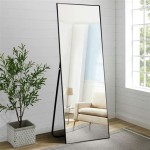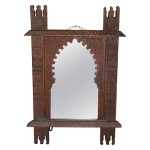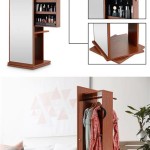How Do I Glue a Mirror to Wood?
Attaching a mirror to a wooden surface requires careful consideration of the adhesive used and the preparation process. Selecting the correct glue ensures a secure and lasting bond, preventing the mirror from detaching and potentially causing damage or injury. This article will outline the necessary steps and considerations for successfully gluing a mirror to wood.
Choosing the Right Adhesive
The type of adhesive is crucial for a successful mirror-to-wood bond. Traditional adhesives like general-purpose construction adhesive are not suitable for mirrors. These adhesives can damage the mirror's silver backing over time. Instead, opt for neutral-cure silicone sealant or a specialized mirror adhesive. These adhesives are formulated to be non-corrosive to the mirror backing and offer excellent adhesion to both glass and wood.
Preparing the Wood Surface
Proper surface preparation is essential for optimal adhesion. The wood surface should be clean, dry, and free of dust, dirt, and grease. If the wood is unfinished, sanding it lightly with fine-grit sandpaper can improve adhesion. If the wood is finished, ensure the finish is compatible with the chosen adhesive. Some finishes may require light sanding or cleaning with a solvent to promote adhesion.
Preparing the Mirror
The back of the mirror should also be clean. Wipe it down with a clean, lint-free cloth and isopropyl alcohol to remove any fingerprints or residue. Ensure the mirror is completely dry before applying the adhesive.
Applying the Adhesive
When using silicone sealant or mirror adhesive, apply it in even beads or lines to the back of the mirror. Avoid applying the adhesive too close to the edges of the mirror, as this can cause it to squeeze out and create a mess. For larger mirrors, consider using a caulking gun to apply the adhesive in a consistent and controlled manner. The spacing of the adhesive beads depends on the size and weight of the mirror. For smaller and lighter mirrors, several evenly spaced lines of adhesive are usually sufficient. For larger and heavier mirrors, use more lines of adhesive placed closer together to ensure a secure hold and distribute the weight evenly.
Positioning and Securing the Mirror
Carefully position the mirror on the wood surface. Once the mirror is in contact with the wood, apply even pressure across its surface to ensure good contact with the adhesive. Support the mirror while the adhesive cures. This can be done using temporary supports like painter's tape or wooden blocks. Consult the adhesive manufacturer's instructions for the recommended curing time. This is typically between 24 and 72 hours.
Safety Precautions
When working with adhesives, always ensure adequate ventilation. Wear gloves to protect your skin. If any adhesive comes into contact with your skin, wash it off immediately with soap and water. When handling glass mirrors, wear safety glasses to protect your eyes from potential shards. If the mirror breaks, handle the pieces with extreme caution, using gloves and sweeping up the fragments thoroughly. Dispose of broken glass safely, wrapping it in thick paper or cardboard and labeling it clearly.
Considerations for Different Wood Types
Different types of wood have varying densities and porosities, which can affect adhesion. For highly porous woods, consider applying a sealant before gluing the mirror to create a smoother, more consistent surface for adhesion. This will prevent the adhesive from being absorbed into the wood, ensuring a stronger bond. With particularly dense or smooth hardwoods, lightly sanding the surface can improve adhesion by creating a slightly textured surface for the adhesive to grip.
Alternative Mounting Methods
While gluing is a common and effective method for attaching mirrors to wood, alternative methods are available. Mechanical fasteners, such as mirror clips or J-channels, can be used, particularly for heavier mirrors. These provide additional support and security. For a frameless look, consider using double-sided mirror tape, which is specifically designed for bonding mirrors to various surfaces. Always consult the manufacturer's instructions for any mounting hardware or tape to ensure it is suitable for the specific type of mirror and wood.
Dealing with Uneven Surfaces
If the wood surface is uneven, shims can be used to create a level plane for the mirror. Place the shims strategically behind the mirror to fill in any gaps and ensure even contact with the adhesive. This prevents stress on the mirror and ensures a secure and stable bond. Using shims is particularly important for larger mirrors, as even minor unevenness can lead to distortions or weakened adhesion over time.

How To Glue A Heavy Mirror The Wall Mom Blog Society

How To Make A Diy Wood Frame Mirror With Mirrors Tea And Forget Me Nots

How To Glue A Mirror Wood Fast Effective Start Woodworking Now

Diy Farmhouse Mirror Made From Shims House Of Hepworths

How To Frame A Bathroom Mirror Diy Family Handyman

Diy Farmhouse Wood Frame Mirror She Gave It A Go

Diy Bathroom Mirror Frame For Under 10 O Hayley Blog

How To Glue A Mirror Wood Fast Effective Start Woodworking Now

Easy Driftwood Mirror The Wood Grain Cottage

Diy Farmhouse Wood Frame Mirror She Gave It A Go








